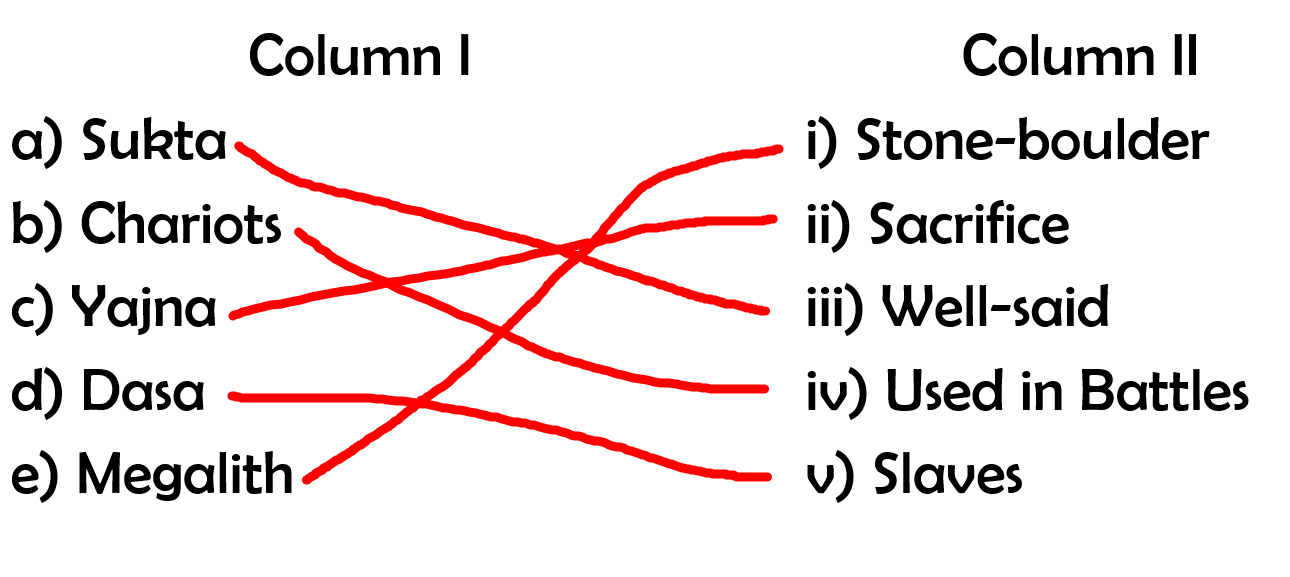Chapter 5 - What Books and Burials Tell Us
Question 1: Match the columns:

Question 2: Complete the sentences:
a) Slaves were used for _______________.
b) Megaliths are found in ________________.
c) Stone circles or boulders on the surface were used to _____________________.
d) Port-holes were used for ___________________
e) People at Inamgaon ate _________________.
Answer:
a) Slaves were used for work.
b) Megaliths are found in South India, north-east and Kashmir.
c) Stone circles or boulders on the surface were used to indicate the exact place of burial.
d) Port-holes were used for burying the other member of the same family at the same place.
e) People at Inamgaon ate wheat, barley, rice, pulses, millets, peas, sesame, etc.
Question 3: In what ways are the books we read today different from the Rigveda?
Answer: The most important points of difference between the Rigveda and the modern books is that today books are written and read. The Vedas were memorized by students, and later passed on to the later generations by speaking, listening and then memorizing.
Question 4: What kind of evidence from burials do archaeologists use to find out whether there were social differences amongst those who were buried?
Answer:
• Sometimes, archaeologists find a circle of stone boulders or a single large stone standing on the ground. These are the only indications that there are burials beneath.
• All these burials have some common features. Generally, the dead were buried with distinctive pots, which are called Black and Red Ware. Also found are tools and weapons of iron and sometimes, skeleton of horses, horse equipment and ornaments of stone and gold.
• Several kinds of evidences from burials do archaeologists use to find out that there were social differences amongst those who were buried underneath the megaliths. They think that objects found with a skeleton probably belonged to the dead person. Sometimes more objects were found in one grave than in another. For instance in Brahmagiri, one skeleton was buried with 33 gold beads, 2 stone beads, 4 copper bangles and one conch shell. Other skeletons had only a few pots. Perhaps there were differences in status amongst the people who were buried. Perhaps some were rich, others poor, some chiefs, others followers.
Question 5: In what ways do you think that the life of a ‘raja’ was different from that of a ‘dasa’ or ‘dasi’?
Answer: In the society, ‘raja’ was one of the highest civil positions. ‘Rajas’ were the kings of the community, whereas the ‘dasas’/’dasis’ were the lowest position in society. The dasas/dasis were slaves who were used for work. They were treated as the property of their owners. They were captured in war.
No comments:
Post a Comment